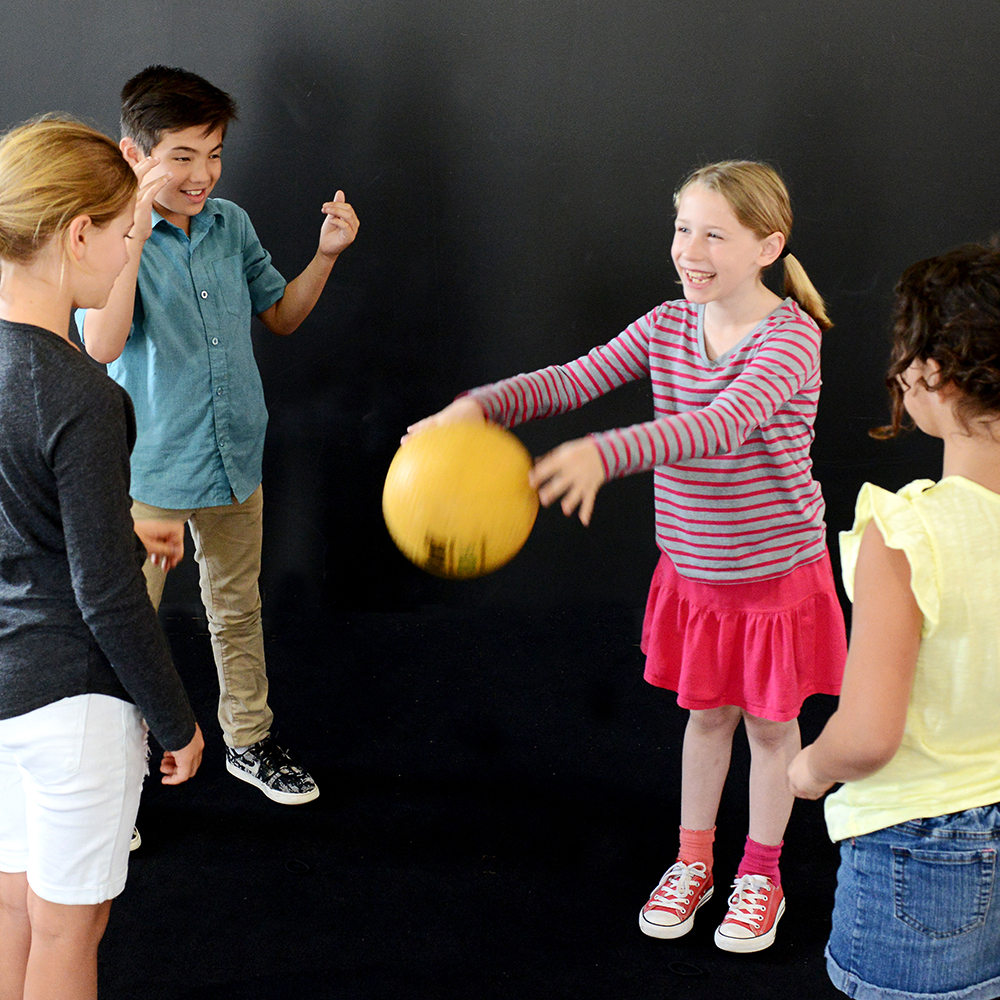Add some improvisation to bouncing a ball back-and-forth! This game is like musical chairs, except you earn your seat not by sitting down before others, but by (creatively) thinking on your feet! This group activity encourages divergent thinking and improvisation.
Materials Required
- A bouncy ball
Instructions
- Grab a ball and stand in a circle.
- Have one player choose a category such as "Ice Cream Flavors.”
- The player holding the ball names something in that category, "vanilla” for example, then bounces the ball to another person in the circle.
- The next player must say another word in the same category, such as "chocolate chip." He or she then bounces the ball to another player.
- When a player cannot name something new in the category, he or she is out.
- The last player standing gets to choose the category for the next round!
Additional Tips
Try these add-on activities:
- There are countless ways to adapt both the physical challenge of catching the ball and the brainstorming challenge of this game. Here are a few examples of how to adapt this activity:
- Physical challenges:
- Stand on one foot.
- Use your “off” hand (if you are right-handed, use your left hand, and vice-versa).
- Categories:
- Create signs with the categories written on them, but leave one letter blank.
- C A _ S (could be types of: CATS, CARS, CANS, etc.)
- _ O O K S (could be types of: BOOKS, COOKS, LOOKS, etc.)
- S H O _ S (could be types of: SHOES, SHOWS, SHOTS, etc.)
- Whoever catches the ball can play charades with the rest of the group so that you have to guess the word that fits the category.
- Create signs with the categories written on them, but leave one letter blank.
- Physical challenges:


